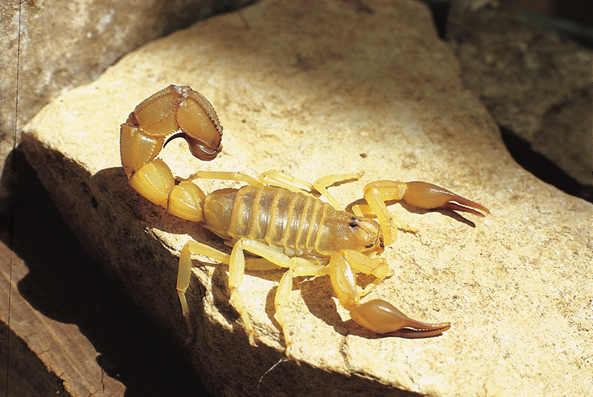
His curved tail tipped with a poisonous barb, the scorpion signals peril in Scripture as in life. The word for scorpion (akrab) appears nine times in the Old Testament and five times in Greek (scorpios) in the New Testament. It occurs dozens of times in the rabbinic writings of the Talmud.
We know from fossils that scorpions have inhabited the earth for at least 400 million years, making these creatures the most ancient of all terrestrial arthropods (invertebrate animals with jointed legs and body and external skeleton). They range in length from one-half inch to eight inches, and in color from black, brown or yellow to gray. Twenty scorpion species are known today in Israel and the Sinai desert. About 1,000 species have been described throughout the world. Four of those found in Sinai are dangerous to humans, particularly the yellow scorpion, Leiurus quinquestriatus hebraeus, and Androctonus australis, common in southern Sinai. Their venom causes paralysis of the cardiac and respiratory muscles and can be fatal.
The Hebrews were certainly familiar with the danger of scorpions from their life in Egypt and their wanderings in the Sinai desert. In Deuteronomy, Moses warns the Israelites: “Beware lest your heart grow haughty and you forget the Lord your God…who led you through the great and terrible wilderness, with its seraph serpents and scorpions” (Deuteronomy 8:14–15).
Already a library member? Log in here.
Institution user? Log in with your IP address.

